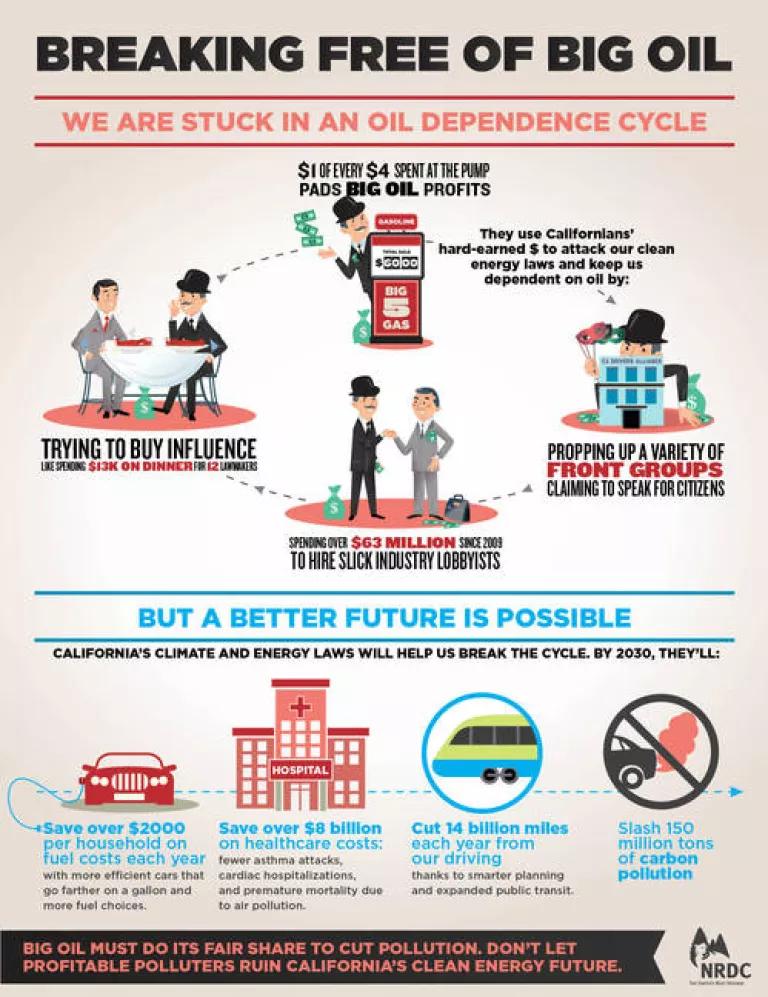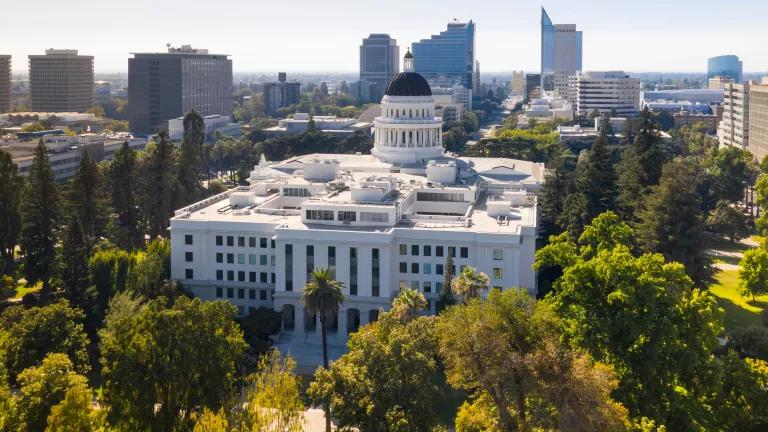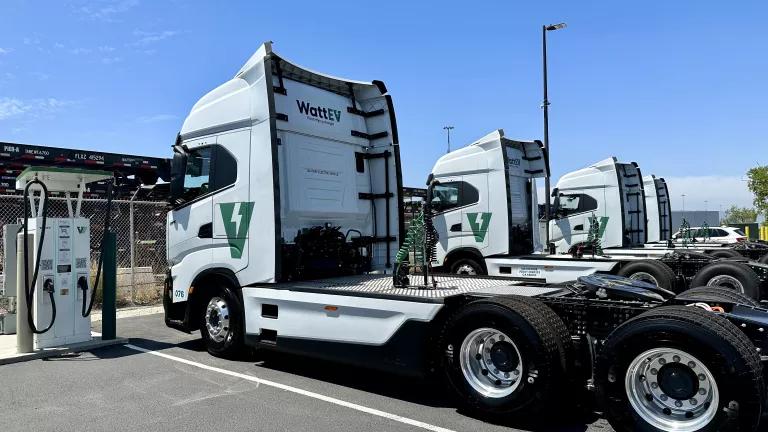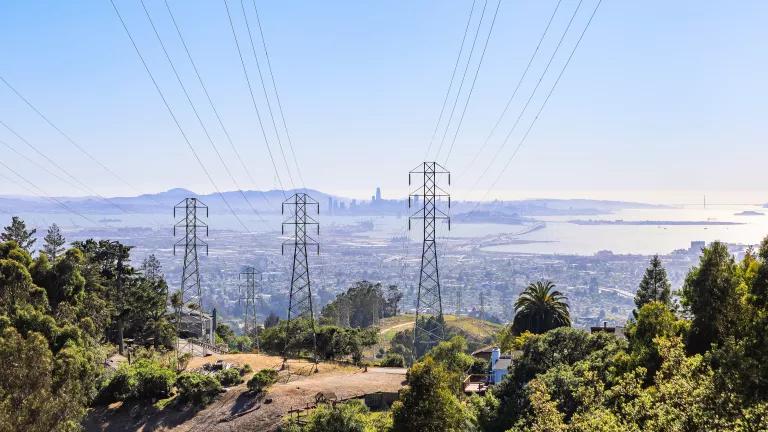Breaking Free of Big Oil: Despite Oil Company Opposition, California is Moving Toward a Cleaner Future

The results of California’s latest cap-and-trade auction were released today, marking another milestone in the state’s landmark climate and clean energy law, AB 32, which put limits on harmful climate pollution. But playing out in the background, the oil industry’s long-running campaign against AB 32 continues to escalate.
From truck-mounted billboards circling the capital in Sacramento, to record amounts spent on lobbying, to a petition campaign to stop the so-called “hidden gas tax” led by oil industry-funded front groups, Big Oil is pulling out all the stops to evade accountability for its carbon emissions under the cap-and-trade program, set to take effect January 1st.
Californians have seen this movie before (in fact, it’s been playing just about continually for going on a decade). And we’re not buying it.
The transportation fuels industry accounts for 40 percent of our climate pollution, the single-largest source in California. With the state’s other major emitting industries already covered under the cap-and-trade program, which puts an upper limit on emissions and requires polluters to either reduce emissions or buy a diminishing number of pollution allowances, it’s time for the oil industry to pay its fair share.
The Oil Dependence Cycle
Rather than investing in less-polluting transportation fuels or more efficient extraction and refining processes, which would help reduce the emissions polluting the state’s air and damaging the health of its residents, the oil industry is financing a campaign to keep Californians dependent on the status quo.
- Record profits: Oil companies are drawing on deep pockets to fight against progress on clean energy and climate solutions. Approximately $1 of every $4 spent at the pump pads the pockets of Big Oil. In 2013, a “down year” for the oil industry, the big five (BP, Chevron, ConocoPhillips, Exxon Mobil, and Shell) earned over $93 billion, or $177,000 a minute in profit. A recent report also found that the largest 20 oil companies pay less than 12% in taxes by exploiting tax loopholes.
- Aggressive lobbying: Since 2009, the oil industry has spent over $63 million on lobbying in California alone. Both Chevron and the Western States Petroleum Association (WSPA), the most prominent and well-funded oil industry organization in California, are among the top five largest spenders on lobbyists this year. WSPA treated 12 lawmakers to a $13,000 private dinner last September, right before a contentious vote on a fracking bill.
- Deceptive front groups: The oil industry supports front groups with names like California Drivers Alliance, Fed Up at the Pump, and CARE (Californians for Affordable & Reliable Energy) that appear to speak for a much broader constituent base than the concentrated oil interests that prop up these groups.
A Better Future is Possible – And We’re Getting There
Big Oil’s campaign against making the transportation fuels industry pay for its pollution plays on the very real vulnerability of Californians to gas prices. Fortunately, Californians pay less in total energy bills than residents of 45 other states. But we are, like most Americans, still greatly dependent on gasoline to get to work, school and elsewhere.
That comes at a significant cost. Four in ten Californians, more than in any other state, live close enough to a freeway or busy road that they are at increased risk of asthma, cancer and other health hazards from vehicle pollution. As a result, nearly twice as many Californians die from the health impacts of vehicular pollution as from motor vehicle accidents. These harmful impacts disproportionately burden low-income communities and communities of color, who often live in regions with poorer air quality and closer to pollution sources.
Reversing or delaying the scheduled inclusion of transportation fuels under the pollution cap would worsen the situation, making Californians more dependent on oil and more vulnerable to rollercoaster gas prices. Californians need to continue working toward a better future together – one with cleaner energy sources, more transportation choices, and healthier communities.
Fortunately, that is exactly the path California is following. The state’s clean energy and climate laws are leading to cars that drive farther on a gallon, more fuel competition, better access to public transit, and access to cheaper fuels like clean electricity – which all help save money at the pump, and create a cleaner environment and better future. And proceeds from the cap-and-trade program are solely dedicated to further reducing climate pollution, with at least one-quarter of the funds set aside to benefit disadvantaged communities.
The oil companies may have deep pockets, but their attempts to get Californians to back down is unconvincing given all that California has already accomplished. It is time for Big Oil to stop the foot-dragging, and to do its fair share to cut pollution.




